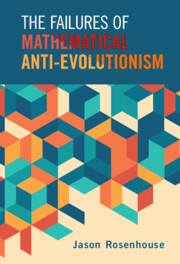Book contents
Bibliography
Published online by Cambridge University Press: 28 April 2022
Summary

- Type
- Chapter
- Information
- The Failures of Mathematical Anti-Evolutionism , pp. 275 - 284Publisher: Cambridge University PressPrint publication year: 2022

